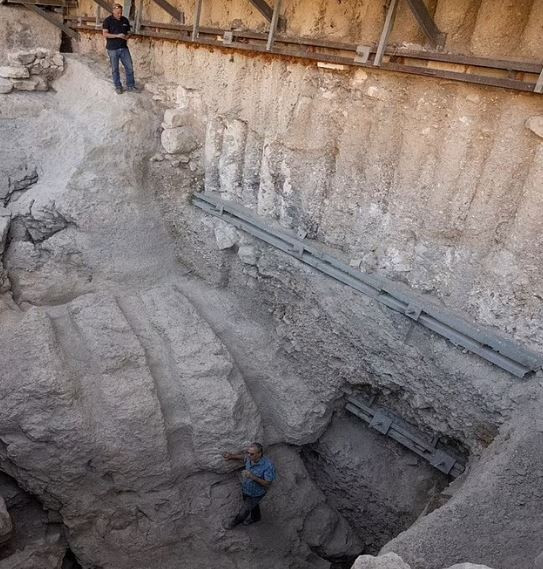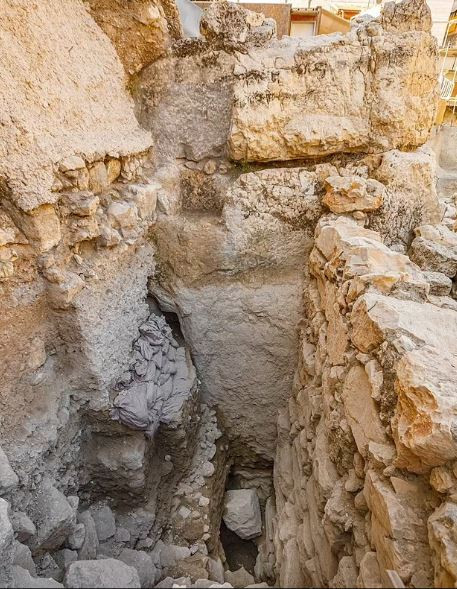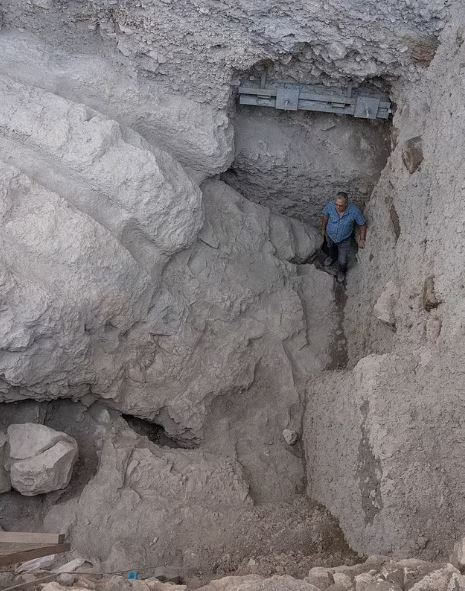These are the ruins of an ancient moat built more than 3,000 years ago in the City of David, which is considered one of the oldest cities in history
Archaeologists have discovered a “monumental” structure in Jerusalem that is mentioned in two books of the Bible.
In particular, these are the ruins of an ancient moat that was built before more than 3,000 years in the city of David, which is considered one of the oldest cities in history.
For 150 years, researchers have been trying to prove that the city split into two – as described in the Bible – and now they uncovered the moat that separated the southern residential area from the upper city in the north.
The ditch it was about 30 feet deep and nearly 100 feet wide with vertical rocks on each side that made it impassable.
The team said the findings confirmed the moat was created during the Iron Age, the same time as the writing of the Book of Kings and the Book of Samuel that described its disintegration City of David in Ophel and Milo.
“This is a dramatic discovery that opens up a new debate about terms from the biblical literature that refer to the topography of Jerusalem,” said Researchers of Israel Antiquities Association (IAA).
The terms Ophel and Milo are used in scripture to describe different parts of the City of David.
A reference to the specific terms can be found in the first Book of Kings (11:27), in which it is mentioned that King Solomon built the structure, which was called “Milo” on the wall of City of David of his father.
The ancient city was the birthplace of Jerusalem and was built by King David to unite Israel around a capital city.
The site was built on top of a narrow, steep ridge overlooking hills and valleys that divided the land and made it difficult to move from one area to another.
“It is not known when the moat was first cut, but evidence suggests it was used throughout the centuries when Jerusalem was the capital of the Kingdom of Judah, nearly 3,000 years ago, beginning with King Josiah,” said Dr. Yiftaf Salef, director of excavations. .
“During those years, the moat separated the southern residential part of the city from the dominant Acropolis to the north, the upper city where the palace and temple were located.”
The IAA confirmed that building designs like this one usually date back to the Middle Bronze Age – around 3,800 years ago.
“We are certain that the moat was used during the time of the First Temple and the Kingdom of Judah in the 9th century BC, so it created a clear divide between the inhabited city to the south and the upper city to the north,” Dr Salef said.
The construction was first discovered on 1960s by British archaeologist Kathleen Kenyon, which noted that the moat was slightly east of today’s Givati parking lot.
Kenyon thought the formation was simply a natural valley, however, it turned out to be a continuation of the trench as it curved westward.
“Once again, discoveries are being made that shed new light on biblical literature,” said Eli Escusido, Director of the IAA.
“When you stand at the bottom of this gigantic excavation, surrounded by massive carved walls, it’s impossible not to be filled with wonder and appreciation for those ancient people who, some 3,800 years ago, literally moved mountains and hills.”
Source :Skai
I am Frederick Tuttle, who works in 247 News Agency as an author and mostly cover entertainment news. I have worked in this industry for 10 years and have gained a lot of experience. I am a very hard worker and always strive to get the best out of my work. I am also very passionate about my work and always try to keep up with the latest news and trends.













